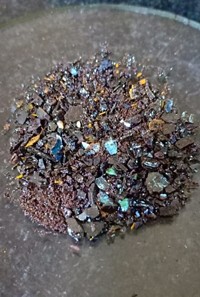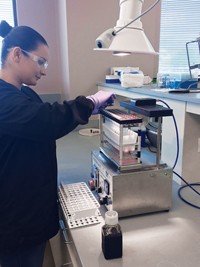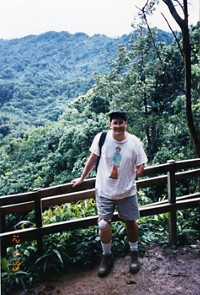Advertisement
Grab your lab coat. Let's get started
Welcome!
Welcome!
Create an account below to get 6 C&EN articles per month, receive newsletters and more - all free.
It seems this is your first time logging in online. Please enter the following information to continue.
As an ACS member you automatically get access to this site. All we need is few more details to create your reading experience.
Not you? Sign in with a different account.
Not you? Sign in with a different account.
ERROR 1
ERROR 1
ERROR 2
ERROR 2
ERROR 2
ERROR 2
ERROR 2
Password and Confirm password must match.
If you have an ACS member number, please enter it here so we can link this account to your membership. (optional)
ERROR 2
ACS values your privacy. By submitting your information, you are gaining access to C&EN and subscribing to our weekly newsletter. We use the information you provide to make your reading experience better, and we will never sell your data to third party members.
Careers
Career Ladder
Career Ladder: Warren Samms
From science-loving Wichita schoolboy to crime-solving chemist
by Ryan Cross, special to C&EN
March 28, 2017
| A version of this story appeared in
Volume 95, Issue 14
1990s
Early experimentation
While his peers in Wichita, Kan., were making a mess with baking soda volcanoes, Warren Samms (right) favored a cabbage acid/base indicator for his elementary science fair experiment. “At the time, it felt like being an actual scientist rather than playing with a neat toy.”
1999
Organic or bust
Samms stayed in Wichita for college, majoring in chemistry and biology at Friends University. “When I got to my second semester of organic chemistry, I had a problem,” he says. “Jazz band practice met at the same time as organic chemistry.” Supported by a trumpet scholarship, Samms was forced to choose between music and chemistry until organic professor Kathryn Boyle (left) intervened. Boyle told Samms she would take him on for a one-on-one independent study. “She’s the reason I stuck with chemistry,” Samms says.
2003
Hooked on drug testing
During graduate school at Wichita State University, Samms researched small molecules that mimic Parkinson’s disease in cells, but he didn’t envision an academic career. “I needed to visibly see that I was making a difference.” Then one day in 2007, he was offered a teaching assistant position for a new forensic science course. Samms helped create laboratory exercises, including one where he would “give undergrad students a white powder” and teach them how to identify drugs such as marijuana and cocaine. He simultaneously interned as a chemist at a county crime lab.
2008
Beyond the usual suspects
Samms moved to Houston to work at the Harris County Institute of Forensic Sciences to identify substances obtained by law enforcement. At first, he saw the usual suspects: cocaine, marijuana, and methamphetamine. “In early 2010, we started seeing these crazy things called designer drugs,” where minor chemical modifications complicated a molecule’s legal status, he says. The lab was also at the front lines of identifying synthetic cannabinoids and methcathinones, a class of drugs commonly called bath salts. “We got to the point where we were almost seeing a new type of substance every day, so we got all kinds of analytical puzzles.”

Today
Forefront of forensic chemistry
“There is never a dull moment” at his job, which has led Samms to testify as an expert witness in court and before Texas legislative committees. In 2013, Samms became the institute’s director of toxicology and chemistry. Recently, his team has seen an uptick in designer fentanyls—deadly synthetic opioids—and he doesn’t see the designer drug trend slowing down. People often ask Samms if his job is like CSI. He laughs and says no. “We use actual science.”
Know a chemist with an interesting career path? Tell C&EN about it at cenm.ag/careerladder.
Check C&ENjobs for the latest job listings, as well as featured videos on what chemists do.







Join the conversation
Contact the reporter
Submit a Letter to the Editor for publication
Engage with us on Twitter